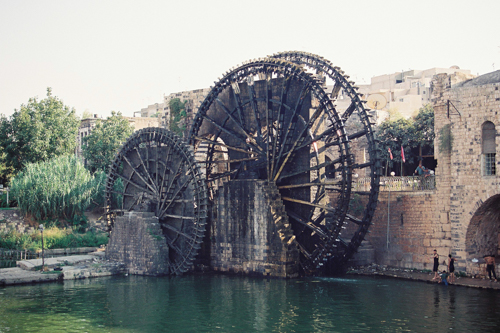(Photos taken with a negative film camera)
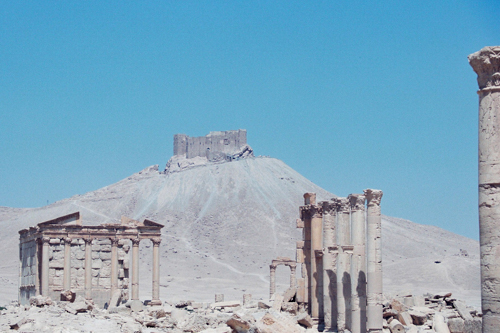
Out of our travels to Syria, Egypt, and Jordan in 2001, Syria stood out as the most pleasant and comfortable country. Contrary to the general perception of the country, the people were gentle and friendly, we felt secure throughout our visit. The foods was delicious, and the weather was mild.
Syria also boasts a rich cultural heritage, ranging from Islamic to Christian and other traditions. While we enjoyed every place we visited, here are top five must-see locations I highly recommend for anyone planning to visit the country in the future (or when it becomes safe to travel without security concerns). Though many of the ruins have reportedly been damaged by the recent civil war, I believe the country is still worth visiting.
1. Palmyra
Palmyra is too famous to miss and has been a UNESCO World Heritage since 1980. The ancient Semitic city thrived because of its extensive trading activities through history as the destination of the Silk Load. While Palmyra was governed by various empires. the architecture we see today blends Graeco-Roman techniques with Persia and the Arab world.
What I particularly appreciated was that restoration has not been fully completed, which made exploring the vast historical site feel like a treasure hunt – strolling through the massive ruins and discovering hidden gems along the way.
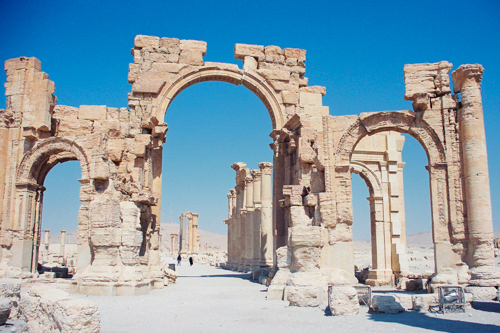
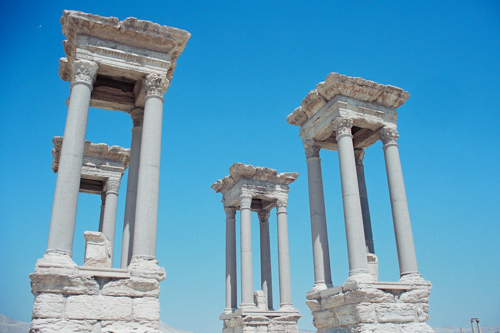
When I reflect on my visit to Syria years ago, Palmyra stands out as the place that sparked my interest in the Silk Road and influenced my travel destinations in the years that followed. At the time, we were backpackers with limited fund, so we couldn’t afford a guide. However, we came across many signs that revealed the city’s true metropolitan nature. One such example was a column inscribed with multiple languages.
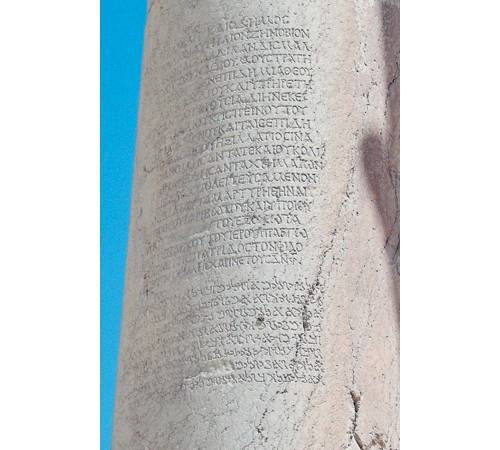
Behind Palmyra, there is a 150-meter-high hill where Palmyra Castle (Arab Castle) is situated.
It was extremely hot on that day, and there was no proper road to the top. Nevertheless, we dared to climb, even though the sandy hill made each step more difficult. From the top, we were able to overlook the entire city. The view was breathtaking, with columns lining the main street leading to the Temple of Bel, one of Palmyra‘s most significant monuments.
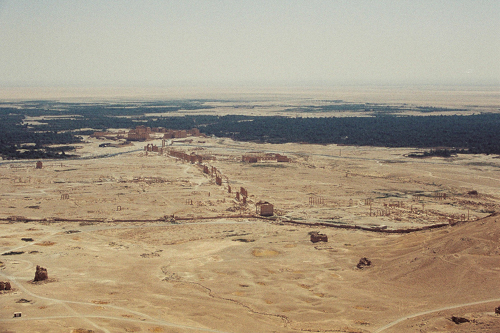
2. Krak des Chevaliers
Krak des Chevaliers is a fortress built by European crusaders and is known as one of the best-preserved castles in the region. It has been recognized by UNESCO as a World Heritage Site since 2006.
We were particularly excited to visit because this castle is said to have inspired the famous Japanese anime, Laputa – Castle in the Sky. When we saw the exterior design there, the towers rising dramatically on top of the hill immediately caught our attention. We agreed that the castle resembled the one in the story.
The castle features 13 big towers, each with two layers. The outer walls stand straight up, while the inner walls slope inward, giving the entire structure a towering, impressive appearance.
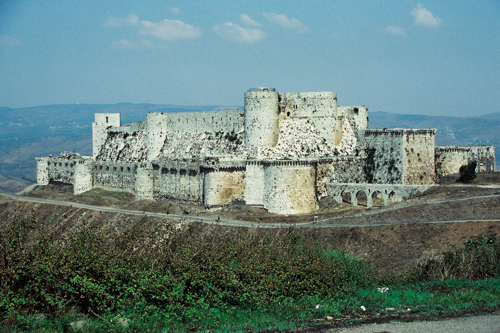
Stepping inside, there are several signs indicating that the castle was built by European crusaders and later seized by Muslim forces. As a result, Gothic, Romanesque, and Arabic architectural elements are found everywhere. One such example ca be seen in the courtyard, where the chapel was converted into a mosque, and two mihrabs were added.
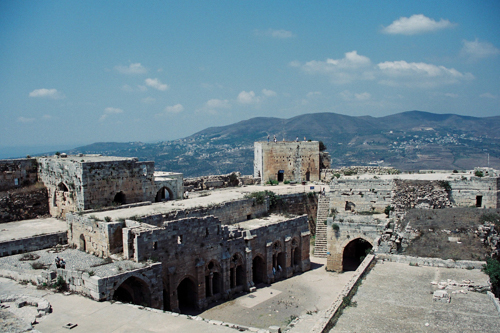
The interior was also impressive. We enjoyed walking through halls with beautiful Gothic-style arched ceilings that connected each area.
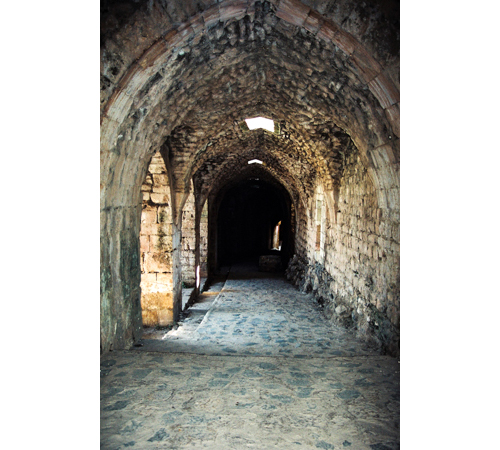
3. Aleppo
Aleppo is the second-largest city in the northernmost of Syria, situated on the boarder with Turkey. Upon arriving in the city, the milder weather was a welcome relief, especially after spending more than a month traveling across deserts from Egypt to Jordan and Syria. What we particularly enjoyed were Aleppo Citadel, the souq (market), and the local ice cream!
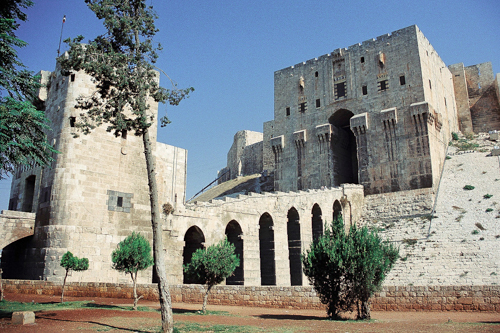
Aleppo Citadel is one of the largest and oldest castles in the world, with a spectacular main gate.
When we visited, however, there were no other tourists, and the castle was so well merged into the city landscape that it appeared to be just another building. We even had trouble finding a proper entrance and ended up getting inside by following some kids who were playing there.
Restoration was underway, and it was clear that the castle was being used as a residential area. The theatre in the courtyard had become a playground for the kids!
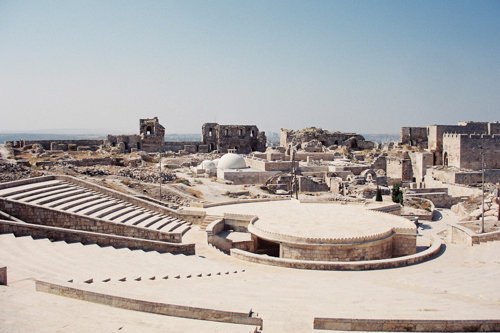
Al-madina Souq (market) is a must-see attraction. Situated within the walled, ancient part of the city, it was added to UNESCO World Heritage Sites in 1986. It’s said to extend to approximately 13 km! Most parts of the souq date back to the 14th century, with each section dedicated to specific professions and crafts.
The temperature inside the souq is quite comfortable, and we enjoyed spending time there, wandering wherever we pleased.
Lastly but importantly, the ice cream in the city was delicious! It’s a milk-based sticky ice-cream with pistachio topping. I enjoyed it several times during my stay in the city.
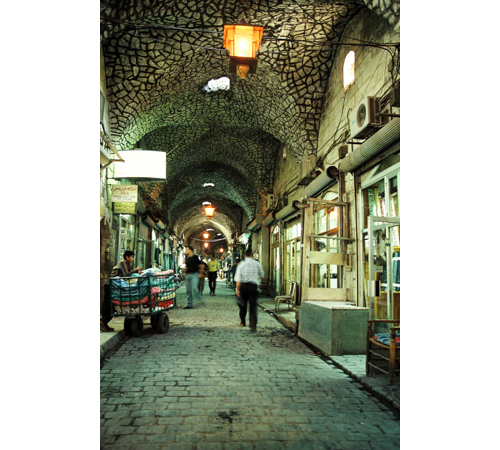
4. Damascus: Mosque, old town, and souq
Damascus is the capital of Syria and the oldest continuously inhabited city in the world.
If I ever have the chance to visit again, I’d love to spend more time in the city. At the time, I was too young and lacked the knowledge to fully appreciate Islamic arts and the beauty of mosques. The city is home to more than 100 historical and architectural monuments, and we visited some of them while exploring the old town. Among these, Umayyad Mosque stands out as the most memorable.
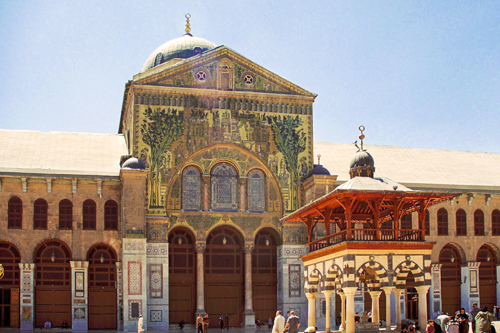
It’s one of the largest and oldest mosques in the world, with a fascinating history. It was built on the site of the Roman Temple of Jupiter, which was later converted into church in the fourth century. After the Islamic conquest of Damascus, the site was shared by both Christians and Muslims. Eventually. the church was demolished, and the site was dedicated a mosque. As a result, some parts of the building, such as the outer walls, still reflect Roman architectural influences.
Compared to the mosques we visited in Egypt and Jordan, the Umayyad Mosque feels more colorful, and full of life. The mosaics on the courtyard wall were particularly striking, depicting flowing rivers, elegant residences, and lush green trees, beautifully capturing the region’s nature.
We spent a considerable amount of time at the mosque, watching pilgrims in the courtyard, sitting in arcades to admire the mosaics, and savoring the peaceful atmosphere of the prayers’ space.
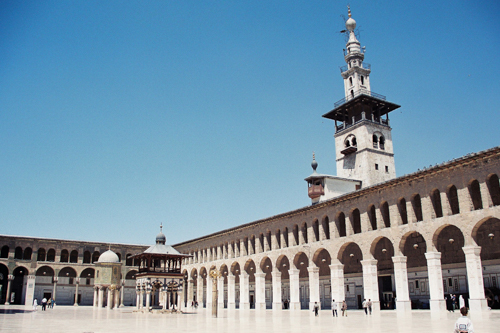
Old Damascus (the Ancient City) is another attraction of Damascus and has been a UNESCO World Heritage Site since 1979. Like other cities in the region, it has been governed by various hands over the centuries, including Assyrians, Persians, Greeks, Nabataeans, Romans, the Umayyad Caliphate, Seljuk Turks, Mongols, Ottomans, and the French. As a result, the city feels as though it doesn’t belong a single culture – some areas appear influenced by Europe, while others reflect Islamic traditions.
When strolling through the narrow lanes aligned with ancient buildings, we discovered many beautiful design details, such as street lamps, window frames, residential gates and doors. Like other cities in the region, the markets (souq) is a must-visit destination.
Lastly, I will never forget our overnight stay at a budget accommodation for backpackers. It was on the open-air rooftop of an old building, where sleeping bags were laid out in rows, and dozens of backpackers slept together. We slept under the stars, with a natural breeze serving as our fan, amidst the hustle and bustle of the big city, and woke up with the sunrise.
5. Hama
Hama is an oasis town, renowned for its abundance of water, lush greenery, and iconic waterwheels. The vibrant plants and greenery made us forget that we were in the middle of deserts.
All the must-see sights are within walking distance. We enjoyed strolling along the river, where we saw numerous waterwheels transferring water from one side to the other. What we loved, however, was the people. The kids playing with the waterwheels are cheerful, repeatedly jumping into the water and proudly showing off in front of us. Kind gentlemen invited us to dinner, and we relished chatting over local dishes – meals we wouldn’t have been able to order by ourselves (or even recognize to try) to try) local meals which we’d never be able to order by ourselves.
Since Hama serves a gateway to Krak des Chevaliers, I highly recommend spending some time in this charming town.
